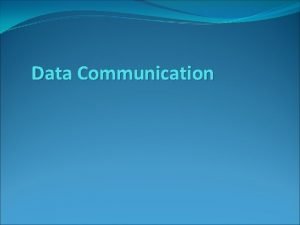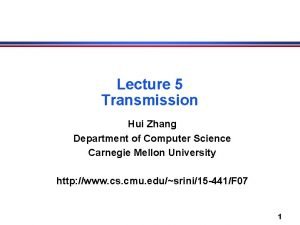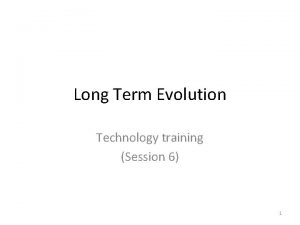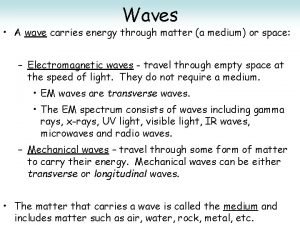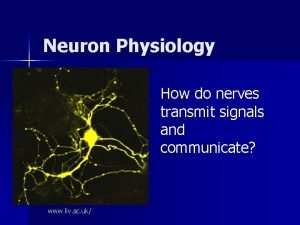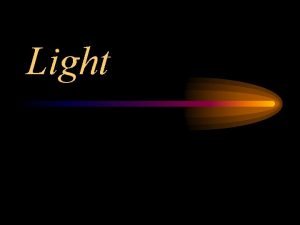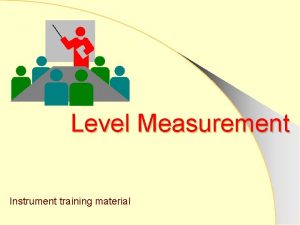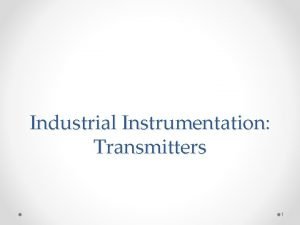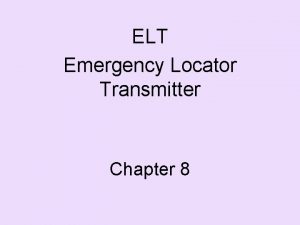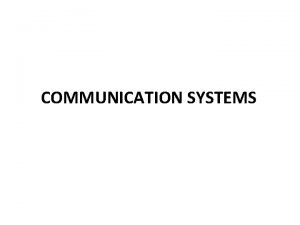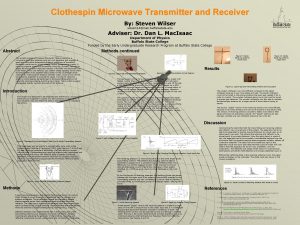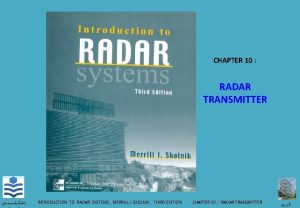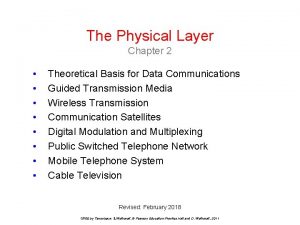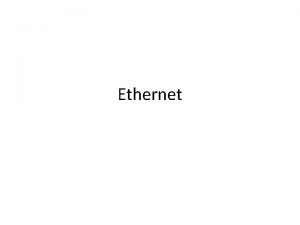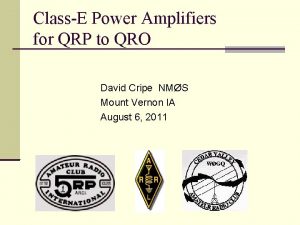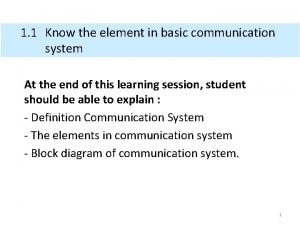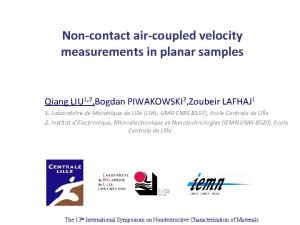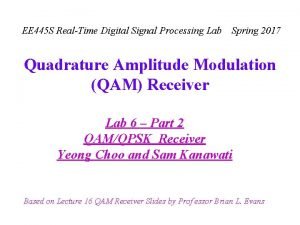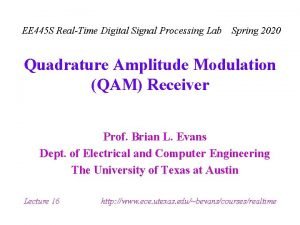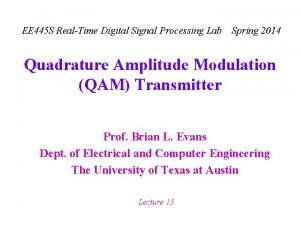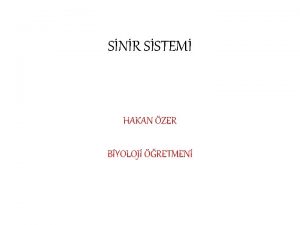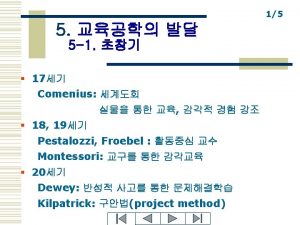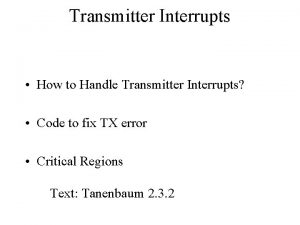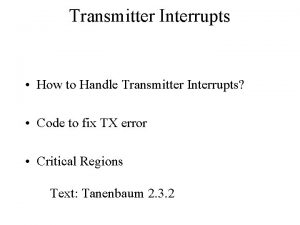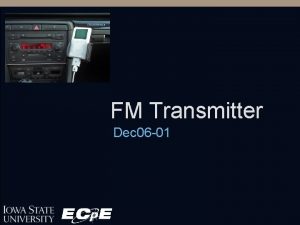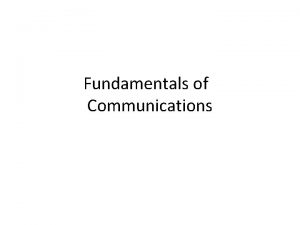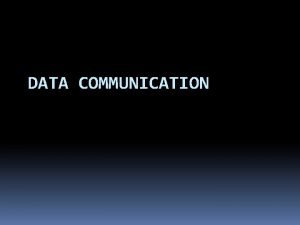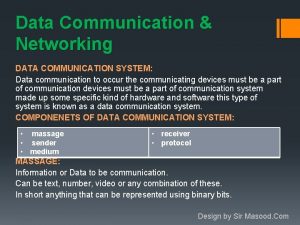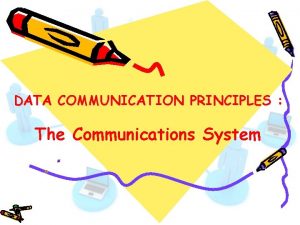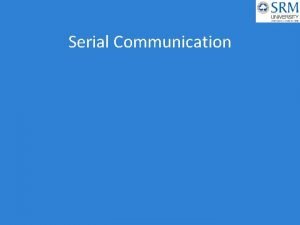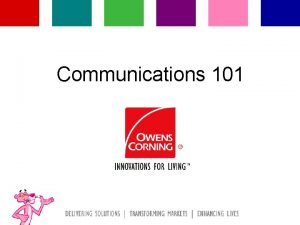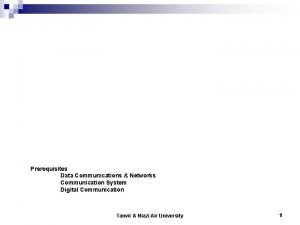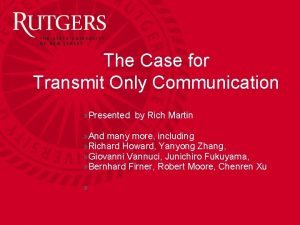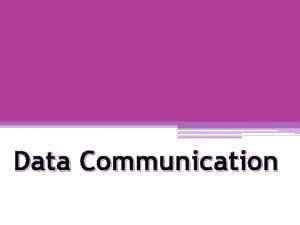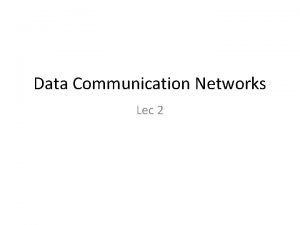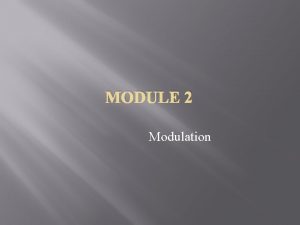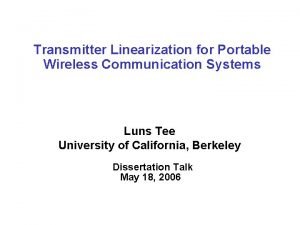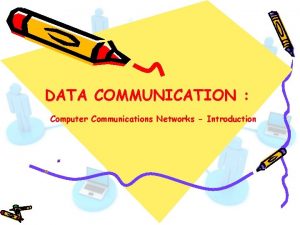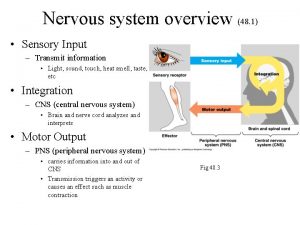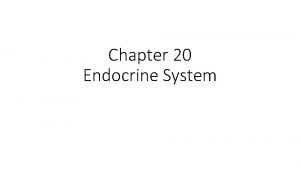Data Communication Data Communications System Transmitter transmit data






























- Slides: 30

Data Communication

Data Communications System �Transmitter – transmit data to another medium. �Receiver – receive data from a transmitter. �Medium of transfer – the medium for transfer of data.

Communications Model Source System Source Workstation Transmitter Modem Destination System Transmission system Public Telephone Network Receiver Modem Destination Server

Simplex Transmission �Simplex communication means that communication can only flow in one direction and never flow back the other way. Data

Half-duplex Transmission �Half-duplex data transmission means that data can be transmitted in both directions on a signal carrier, but not at the same time. Data

Full-duplex Transmission �Full-duplex data transmission means that data can be transmitted in both directions on a signal carrier at the same time. Data

Real life examples �Simplex transmission �Pager �Half-duplex transmission �Telephone, facsimile �Full-duplex transmission �Dual Carriageway

Data Transmission Rate �Data transmission rate: bps, Kbps, Mbps �bps – bits per second �Kbps – kilo-bits per second �Mbps – mega-bits per second �Bps – bytes per second � 1 Byte = 8 bits

Serial Transmission �The transfer of discrete signals one after another. �Bits travel sequentially along the same wire. �Send information over a single line one bit at a time, as in modem-to-modem connections.

Parallel Transmission �The simultaneous transmission of a group of bits over separate wires. �The transmission of 1 byte (8 -bits) with computers.

Parallel Transmission �Relatively fast �Limited distance before data is lost �As short as possible (no longer than 15 feet) �As the length of cable increases so does the danger of cross-talk.

Serial Transmission �Not as fast as parallel transmission �Can transmit data for longer distances

Asynchronous Transmission �In modem communication, a form of data transmission in which data is sent one character at a time. In addition, a parity bit is usually used for error checking. �Avoid timing problem by not sending long, uninterrupted streams of bits. Data bits Parity bit Start bit Stop bit The coding of a typical character sent in asynchronous transmission

Asynchronous Transmission 0 Idle state of line Start bit Odd, even, or unused 5 to 8 data bits 1 – 2 bit times Stop 1 P bit Character format Remain idle or next start bit

Asynchronous Transmission Unpredictable time interval Between characters Start bit Stop bit 11 1 1 0 0 01 Start bit 00 1 0 11 0 0 8 -bit asynchronous character stream Stop bit

Asynchronous Transmission Start 0 100 200 300 400 500 600 700 800 1 0 2 3 4 5 6 7 8 Transmitter timing Stop 93 186 279 372 465 558 651 744 Receiver timing Effect of timing error Assumptions: data rate of 10 kbps 0. 1 ms each bit. The receiver is off by 7% or 0. 007 ms per bit-time The receiver samples the incoming character every 0. 093 ms (based on the transmitter’s clock).

Asynchronous Transmission �Advantages: �simple �cheap �Disadvantages: �requires an overhead of 2 – 3 bits per character (start and stop bits) (>=20%) �cannot send large blocks or bits between start and stop bits with great cumulative timing error

Synchronous Transmission �Data transfer in which information transmitted in block (frames) of bits separated by equal time intervals �A block of bits is transmitted in a steady stream without star and stop codes

Synchronous Transmission �Method 1: �Provide a separate clock line between transmitter and receiver �The other side uses these regular pulses as a clock �This technique works well over short distances �Method 2: �Embed the clocking information in the data signal

Synchronous Transmission Synchronous frame format preamble 8 -bit Control flag fields postamble Data fields Control 8 -bit fields flag

Synchronous Transmission �Advantage: �For sizable/large blocks of data, synchronous transmission is far more efficient that asynchronous. �The control information, preamble, and postamble are typically less than 100 bits. �E. g. 48 bits of control, preamble, and postamble with 1000 -character block of data, each frame consists of 48 bits of overhead and 8000 bits of data, so % overhead = 48/8048 x 100% = 0. 6%

Data Transfer Directed from PC to PC �Direct Cable Connection �A null modem cable allows you to connect your PC to another nearby PC or serial device using its modem protocol. �A null modem cable is limited to 30 feet in length. �A null modem cable is sometimes called crossover cable.

Crossover Cable �A crossover cable is a cable that is used to interconnect two computers by "crossing over" (reversing) their respective pin contacts. �Either an RS-232 C or an registered jack (e. g. RJ-45) connection is possible.

Diagrams on RJ-11 and RJ-45 Interfaces

Data Modem – Modulator and Demodulator Modulator – convert digital signal (data in PC) to analogue signal (data via telephone line) Demodulator – convert analogue signal to digital signal

Data Modem Digital signal Modulation Analogue signal PC Modem Public Telephone Network PC Digital signal Modem Analogue signal Demodulation

Data Modem �Baud Rate �This refers to the number of signals per one second transmitted �Bit Rate �The bit rate is multiplied by the bits per signal

Sources of errors during data transmission �Attenuation �Signal grows weak over distance �White noise �Caused by molecular movement �Impulse noise �Caused by electrical interference �Cross-talk �Caused by interference from adjacent lines

DCE and DTE �Data Terminal Equipment which is the ultimate source or final destination of data messages �DCE �Data Circuit-Terminating Equipment which connects the DTE to the communication circuits

Bandwidth �The capacity at which you can transfer data is called bandwidth �Typical telephone line: 33, 600 kilobits per second (33. 6 Kbps) �Cable TV: 10 megabits per second (10 Mbps) – almost 300 times the capacity of the normal phone connection
 Haniph latchman
Haniph latchman Hui transmit data
Hui transmit data The giver synopsis
The giver synopsis Stores and transmits genetic (hereditary) information
Stores and transmits genetic (hereditary) information Transmit diversity in lte
Transmit diversity in lte Type of wave
Type of wave Neuron physiology
Neuron physiology Structurile scrise cu albastru din schimbul de replici
Structurile scrise cu albastru din schimbul de replici Automatic transmit power control
Automatic transmit power control Transmit waves
Transmit waves Mechanical waves vs electromagnetic waves venn diagram
Mechanical waves vs electromagnetic waves venn diagram Transmit light
Transmit light 3051 smv
3051 smv Fisher 2390 level transmitter manual
Fisher 2390 level transmitter manual Transmitter definition in instrumentation
Transmitter definition in instrumentation Emergency transmitter finder
Emergency transmitter finder Classification of radio message
Classification of radio message Microwave path alignment kit
Microwave path alignment kit Magnetron radar transmitter
Magnetron radar transmitter Universel transmitter bps3000
Universel transmitter bps3000 Mti radar with power amplifier
Mti radar with power amplifier Ethernet transmitter algorithm
Ethernet transmitter algorithm Nat transmitter amplifier
Nat transmitter amplifier Information source transmitter channel receiver destination
Information source transmitter channel receiver destination Transmitter to receiver
Transmitter to receiver Qam transmitter
Qam transmitter Qam transmitter
Qam transmitter Qam transmitter
Qam transmitter Omurgasızlarda sinir şeridi nerede
Omurgasızlarda sinir şeridi nerede Transmitter shannon weaver
Transmitter shannon weaver Bioinformatics toolbox matlab
Bioinformatics toolbox matlab
